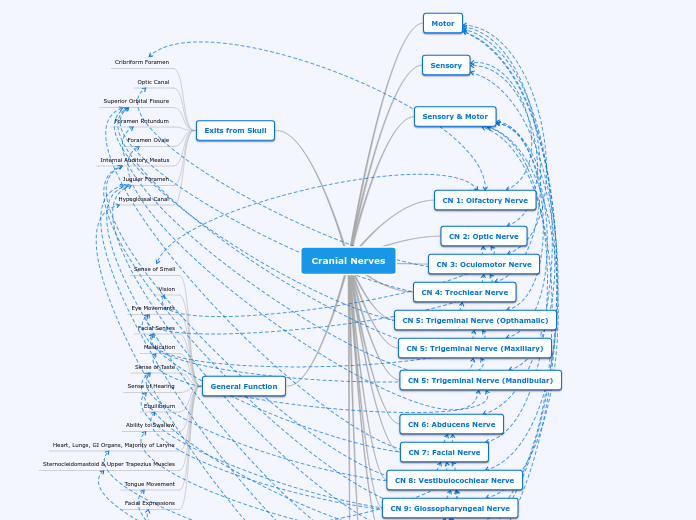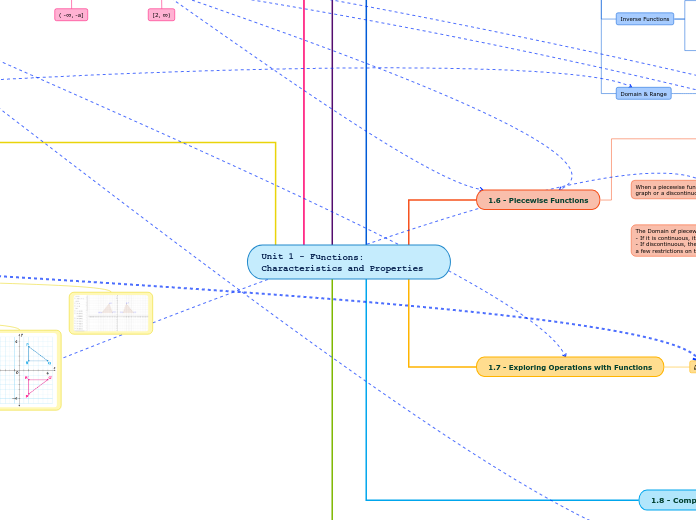MAT.116
2.3-2.4
2.4 The Algebra of Functions
Composite Functions
A composite function is created when one function is used as the input for another function.
For example, given two functions f(x) and g(x), we can create two different composite functions: f(g(x)) and g(f(x)).
We can also write f(g(x)) = (fog)(x) and g(f(x)) = (gof)(x).
The domain of the composite function f(g(x)) is all values of x that result in values of g(x) that are in the range of f(x).
Quotient Functions
The sum of two functions is a new function.
Its domain is the intersection of the domains of the original functions with any values that make the denominator zero removed.
Product Functions
The product of two (or more) functions is a new function.
Its domain is the intersection of the domains of the original functions.
Difference Functions
The difference of two functions is a new function.
Its domain is the intersection of the domains of the original functions.
profit
The total profit function is the total revenue function less the total cost function.
Sum Functions
The sum of two (or more) functions is a new function.
Its domain is the intersection of the domains of the original functions.
total cost
The total cost function is the sum of the variable cost function and the fixed cost function.
2.3 Functions and Their Graphs
Graphs
A function f with domain A is the set of all ordered pairs (x, f(x)) where x belongs to A.
No two ordered pairs can have the same first coordinate.
The graph of a function f is the set of all points (x,y) in the xy-plane such that x is in the domain of f and y=f(x).
The Vertical-Line Test
A curve in the xy-plane is the graph of a function y=f(x) if and only if each vertical line intersects it in at most one point.
Domains
Explicit
When functions are used as models for real world relations, their domains are often restricted much further than just the implicit domain of the function.
Most models are derived empirically from data. They typically should not be considered valid outside the range of data from which they were created. This puts a seriousl restriction on the values in the domain of the function.
Implicit
To find the implicit domain of a function, we must find all real number values of the independent variable that result in a real numbered value for the function.
This is typically accomplished by first assuming that all real numbers are in the domain and then looking for any values which should be excluded from this domain.
For instance, rational functions have domains of all real numbers except for any values of the independent variable that make the denominator zero. Radical functions with an even index cannot have negative radicands, so the domain must include only those values of the independent variable that make the radicand zero or positive.
Functions
A relation is a rule that assigns each to element in a set A one or more elements in a set B.
The set A is called the domain. The set B is called the range.
A function is a relation where the rule assigns to each element in a set A one and only one element in a set B.
Functions are typically named by a lowercase letter of the alphabet. The name is then followed by a set of parentheses that contain the independent variable the function is dependent on.
For example, given a function named f with independent variable x, we would write f(x) (read "f of x") which represents the value of f at x. In this example, x represents a value in the domain and f(x) stands for the one value in the range that corresponds to x.
The expressions f(x) and y are interchangeable for functions, but one should not replace y with f(x) in a relation that is not, or is not known to be, a function.
Piecewise-Defined Functions
A function that is defined by more than one rule is called a piecewise-defined function.









